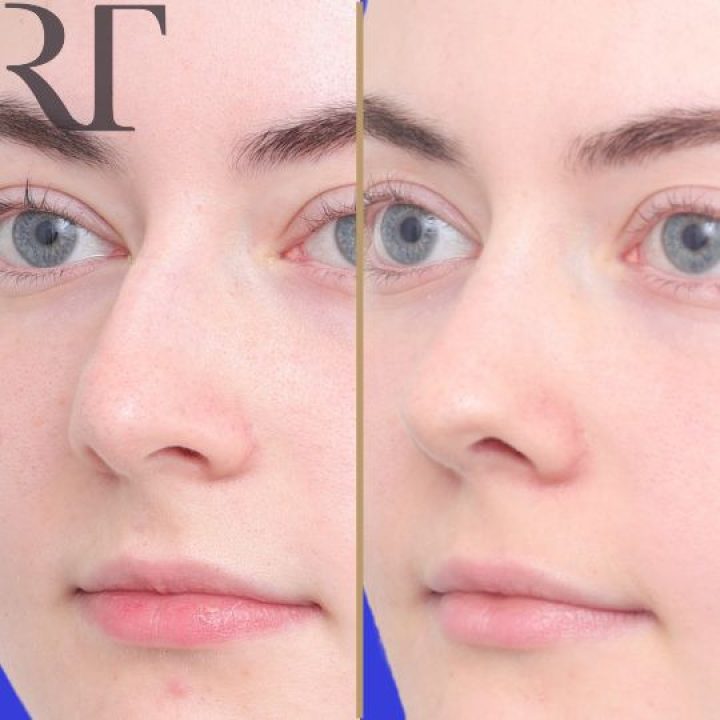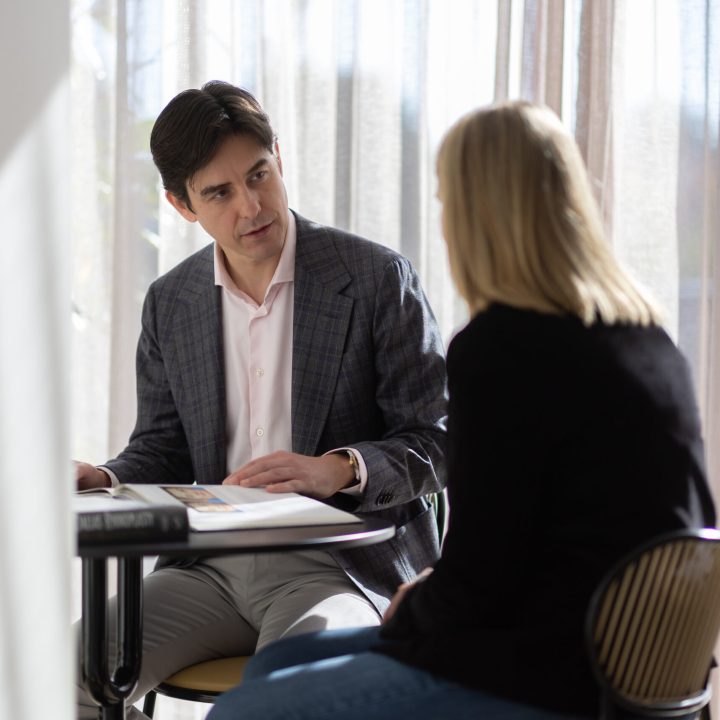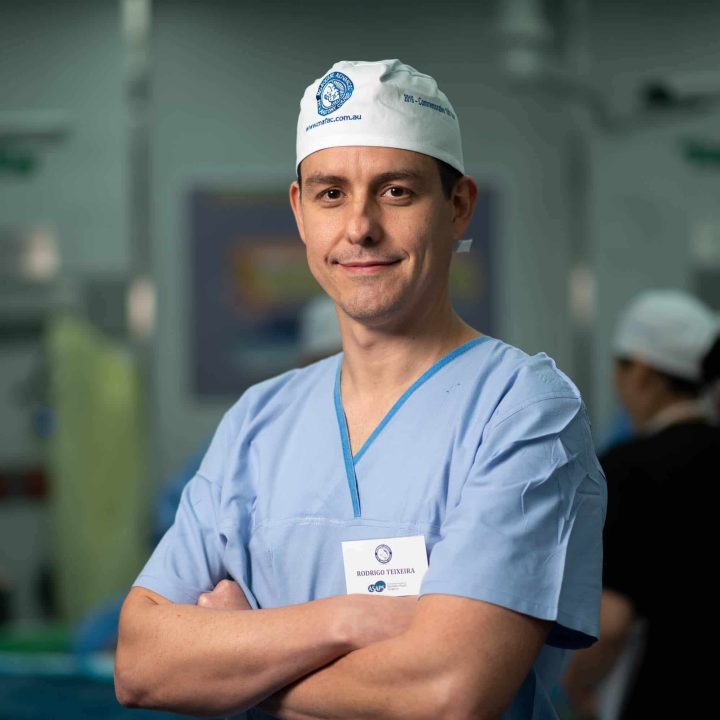Septoplasty Melbourne
(Deviated Septum Surgery)
Dr Rodrigo Teixeira performs Septoplasty in Melbourne as part of rhinoplasty surgery. A deviated septum occurs when the thin wall dividing the nasal passages is displaced or crooked, which can affect air flow through the nose. Septoplasty is a surgical procedure performed to correct this deviation and improve nasal breathing function.
Septoplasty during Rhinoplasty (Rhinoseptoplasty)
The nasal septum is a wall of bone and cartilage that divides the two nasal passages. When it becomes displaced or uneven, often due to genetics, injury, or developmental factors, it can narrow one or both airways, reducing airflow and sometimes altering nasal shape. This condition is known as a deviated septum.
Septoplasty corrects the position of the septum to improve breathing and reduce symptoms such as nasal obstruction, congestion, or snoring. Breathing and comfort typically improve as healing progresses, though outcomes vary between individuals.
While septoplasty focuses on function rather than appearance, it is often performed together with rhinoplasty when internal septal deviation also influences external nasal form. When performed with rhinoplasty, septoplasty is known as rhinoseptoplasty and addresses both functional and structural nasal concerns. Learn more about complementary procedures such as Rhinoplasty in Melbourne.
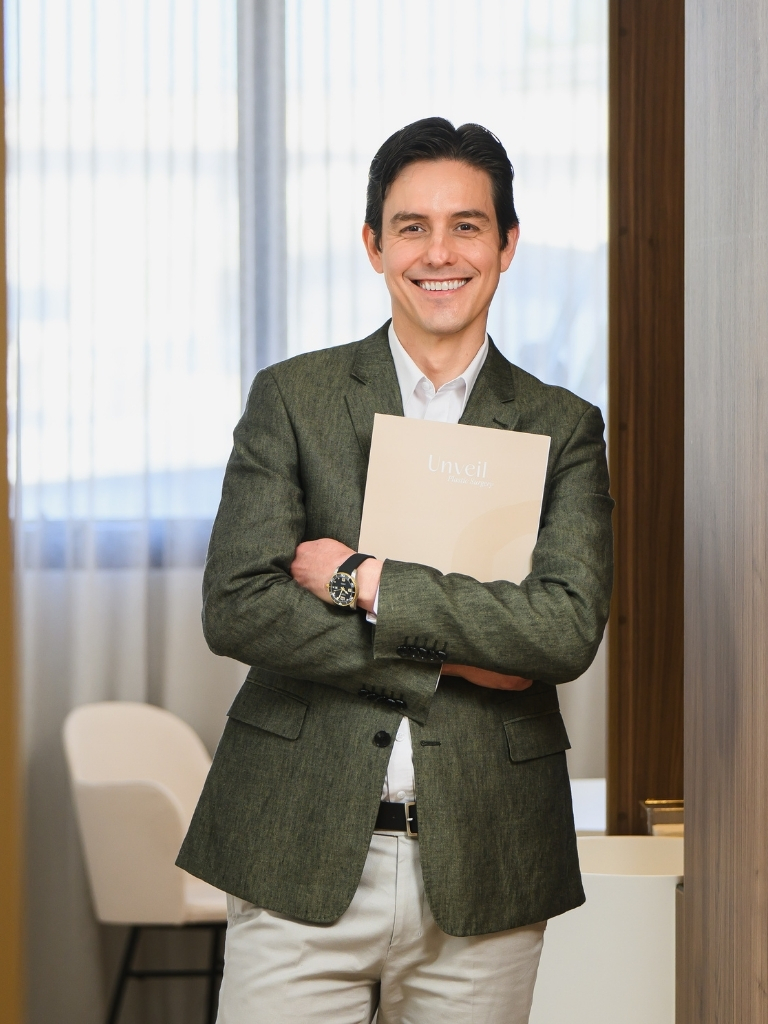
Learn more about Dr Rodrigo Teixeira and his approach to plastic surgery and patient care.
Our Septoplasty (Deviated Septum Surgery) Techniques
Dr Rodrigo Teixeira does not perform septoplasty as a stand‑alone procedure. It is carried out only as a complementary step during rhinoplasty, so that both the functional airway and the external structure of the nose are considered together.
Intranasal (Endonasal) Approach
An incision is made inside the nose, allowing reshaping, repositioning, or selective removal of deviated cartilage and bone while preserving support. This is the most common technique and can be combined seamlessly with rhinoplasty.
Septal Cartilage Repositioning
When the septum is displaced, the cartilage can be carefully mobilised and repositioned to the midline. Sutures or splints may be used to keep the septum stable after correction.
Limited Resection
If obstruction is caused by small segments of cartilage or bone, these may be trimmed or removed in a controlled way, with the rest of the septum preserved to maintain strength.
Grafts and Reinforcement
Cartilage grafts may be added to strengthen the septum, reinforce the internal nasal valves, and support planned rhinoplasty changes to the bridge or dorsum. Most grafts are harvested from the septum itself. If additional material is required, cartilage can also be taken from the ear or rib. These grafts provide airway support and add structure when needed for both functional and cosmetic correction.
Common Septal Problems Corrected During Rhinoplasty
- Posterior Septal Deviation and Bone Spurs: These can obstruct airflow and are trimmed or repositioned to improve breathing.
- Anterior Septal Deviation: Can cause visible nasal misalignment; correction improves both function and alignment.
- Caudal Septal Deviation: Affects the columella and nostril symmetry; correction improves the airway and external balance.
- Short Septum: In patients with inadequate support, septal extension grafts may be used to increase length, projection, or stability, especially when the nasal tip requires structural reinforcement.
The choice of technique depends on the type and severity of deviation, as well as the overall rhinoplasty plan. Dr Rodrigo Teixeira tailors the approach to each patient’s anatomy and breathing concerns. Every procedure is individualised after consultation, with discussion of indications, limitations, and recovery. Septoplasty is performed only in conjunction with rhinoplasty. All surgery involves risks, and recovery varies between individuals.
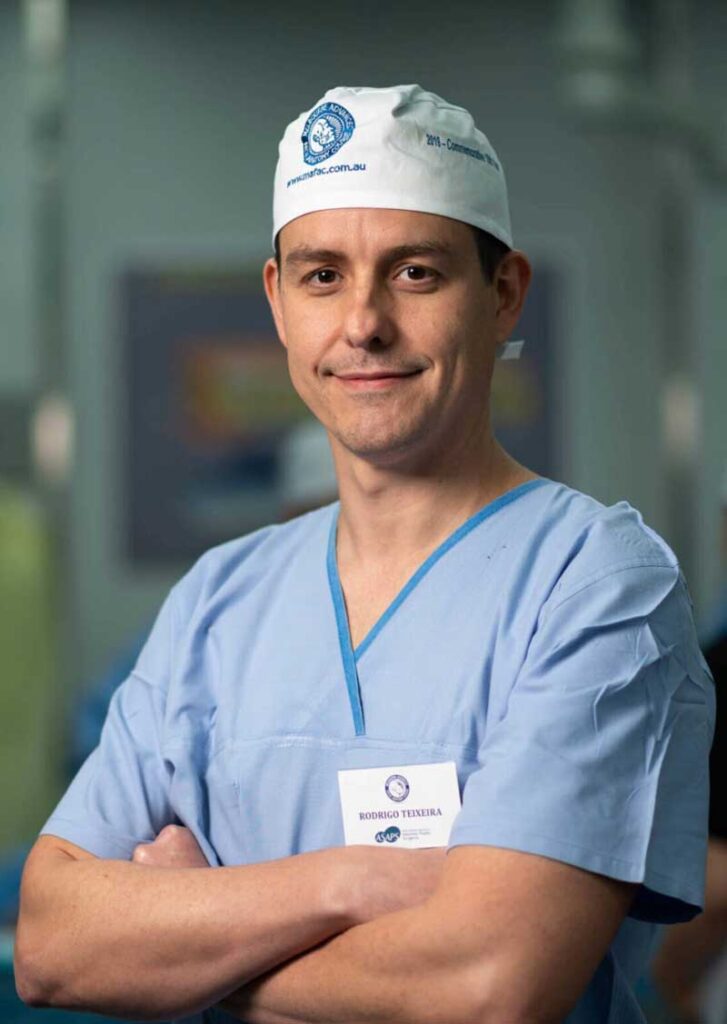
Septoplasty Surgery Risks and Complications
Deviated septum surgery carries potential risks. Common temporary effects include:
- Mild discomfort or pressure inside the nose
- Swelling and congestion
- Small amounts of bleeding or nasal crusting
- Temporary reduction in the sense of smell
- Numbness around the nasal area
Less common or rare complications may include infection, persistent blockage, septal perforation (small hole in the septum), internal scar tissue (adhesions), subtle changes in nasal contour, or the need for revision surgery. Following post-operative instructions carefully supports safe recovery and reduces potential risks.
Septoplasty Surgery (Deviated Septum Surgery): What to Expect From Initial Consultation to Recovery
1. Initial Consultation
Your first consultation includes a detailed assessment of your nasal structure, airway, and breathing patterns. Dr Teixeira reviews your medical history, discusses your symptoms, and explains how septoplasty, when performed as part of rhinoseptoplasty, can improve airflow and structural balance. You will also receive information about the procedure, recovery, and potential risks.
2. The Day of Surgery
Septoplasty is performed under local or general anaesthesia, depending on the case. All incisions are made inside the nose, or through the rhinoplasty incisions, leaving no additional external scars. The septum is repositioned or reshaped to restore a clear airway and support the nasal framework.
Soft internal silicone splints (Doyle stents) are often placed to stabilise the septum, protect healing tissues, and reduce the risk of septal haematoma. These stents can cause some pressure or congestion until removed, usually after several days.
3. Recovery Process
After surgery, some swelling, congestion, or mild discomfort is expected for several days. Most patients can return to light activities within about a week, though complete recovery may take two to four weeks.
To promote healing, patients are usually advised to:
- Use saline rinses to keep the nasal passages clean
- Avoid strenuous activity and heavy lifting for several weeks
- Refrain from blowing the nose until cleared by the surgeon
- Attend scheduled follow-up appointments to monitor progress
Breathing typically improves as swelling subsides and tissues settle, though recovery experiences vary.
Our Melbourne Clinic
Dr Teixeira’s Melbourne clinic provides a professional and supportive environment for patients undergoing nasal surgery. The facility is equipped to meet high standards of surgical care, ensuring comfort and privacy at every stage of treatment.
The experienced clinical team works closely with patients before, during, and after surgery to provide guidance, reassurance, and individualised attention. Conveniently located in Melbourne, the clinic is easily accessible for both local and interstate patients seeking specialist nasal surgery.
You can also explore other facial procedures such as Facial Surgery Melbourne for a broader overview of treatments offered by Dr Teixeira.
FAQs
Septoplasty is a surgical procedure performed to straighten a deviated septum. The procedure aims to improve airflow through the nasal passages.
Medicines can ease symptoms but don’t straighten the septum. A deviated septum can only be corrected through surgery.
Septoplasty is a functional procedure and does not aim to change nasal appearance. If structural deviation also affects nasal shape, it’s addressed with rhinoplasty at the same time (rhinoseptoplasty).
Straightening the septum is intended to be long-lasting, and many patients report sustained symptom improvement. However, symptoms can persist or recur in some people and a small proportion may consider revision. Outcomes vary.
Early on, it is recommended sleeping on your back with your head elevated to reduce swelling/bleeding; side sleeping is typically resumed once your surgeon advises it based on healing.
Persistent blockage can occur due to residual deviation, scar tissue (adhesions), swelling, or cartilage “memory.” Some patients may need further treatment or revision surgery.
Avoid blowing your nose for at least two weeks post-surgery to prevent bleeding or disruption of healing tissues. Your surgeon will tell you when gentle nose-blowing is safe to resume.
Expect congestion for the first days to weeks as swelling settles. Breathing usually improves progressively as healing advances, though timelines differ between individuals.
Most patients are advised to avoid flying for one or two weeks after surgery to prevent pressure-related discomfort or complications.
